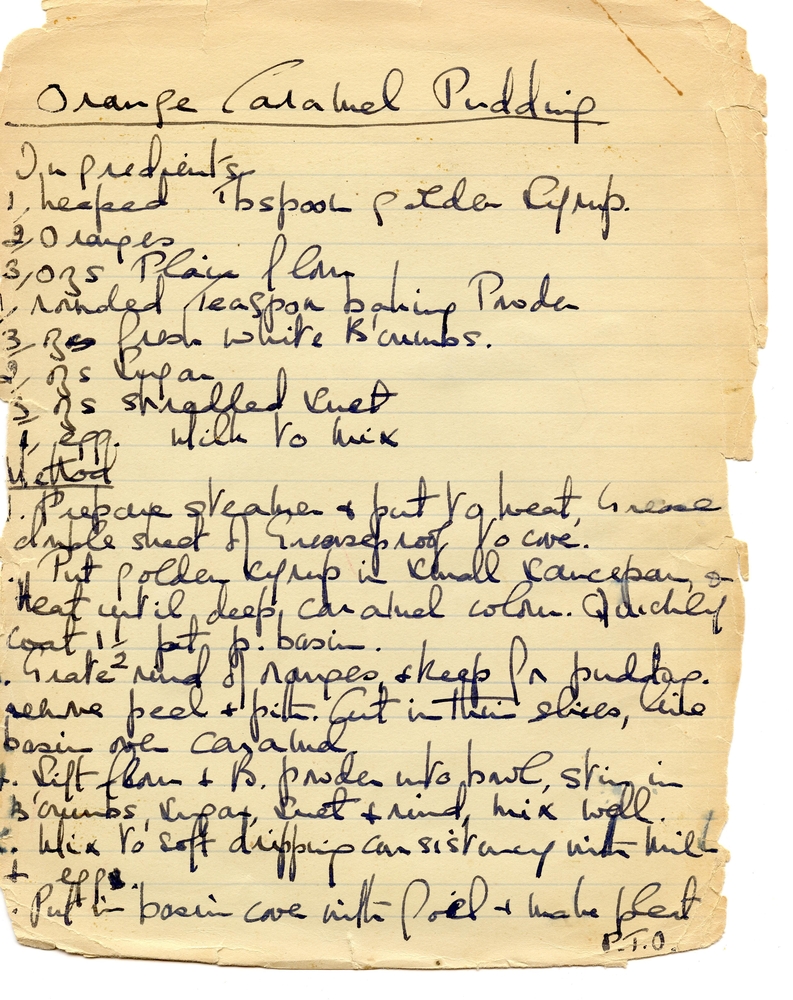Family traditional recipes are an integral part of our cultural heritage and a valuable way to connect with our ancestors. These recipes not only provide us with delicious meals but also serve as a link to our family’s history, preserving the tastes and flavors of those who came before us for generations to come.

Treasured family recipes like this Orange Caramel Pudding can be passed down from generation to generation. What is a treasured recipe in your family?
Family Time Together
Children adore spending time with their grandparents, learning recipes their parents also enjoyed learning as children. This is how traditions are born!

Passing down recipes from generation to generation is a cherished tradition in many families, providing a sense of purpose and intergenerational bonds. It allows us to relive memories of shared meals and special events, and to set an example that spending time together as a family is important. These recipes also help to preserve our cultural heritage, allowing us to experience the flavors and cooking styles of our ancestors.

In today’s fast-paced world, traditional family recipes are more important than ever. They remind us of the simple, comforting pleasures of home-cooked meals and help us to slow down and connect with the people and traditions that matter most to us. Whether you’re a seasoned cook or just starting out, prioritize preserving your family’s traditional recipes. Not only will you be preserving your family’s history, but you’ll also be creating a legacy of love and comfort that will endure for generations to come.
During the third week of Bake for Family Fun Month, “Baking History and Traditions,” why not spend some time interviewing family members to discover the recipes and traditions that are important to those you love.
More Practical Ways You Can Keep Family Traditions Alive
Document and organize the recipes: Write down the recipes and gather any relevant information such as the history behind the dish, who passed it down, and any special instructions. You can use a physical cookbook, a digital recipe book, or even just a simple notebook to keep track of the recipes.
Share the recipes with family members: Encourage your family members to try the recipes and share their own family favorites. This helps to keep the traditions alive and ensure that everyone in the family is aware of the important recipes.
Cook the recipes together: Spending time cooking together can be a fun and bonding experience, and it’s a great way to pass down recipes and traditions. Whether it’s a family dinner or a special event, cooking together is a great way to share memories and experiences.
Teach the recipes to younger generations: Encourage children and grandchildren to help out in the kitchen and teach them the recipes and techniques. This helps to keep the culinary traditions alive for future generations.
Celebrate special events with traditional dishes: Whether it’s a family holiday, birthday, or other special occasion, serving traditional family dishes is a great way to celebrate and pass down the recipes and culinary traditions. This helps to keep the memories and traditions alive and ensures that they are cherished for years to come.
Further Reading:

The Secret History of Home Economics by Danielle Dreilinger
The term “home economics” may conjure traumatic memories of lopsided hand-sewn pillows or sunken muffins. But common conception obscures the story of the revolutionary science of better living. The field exploded opportunities for women in the twentieth century by reducing domestic work and providing jobs as professors, engineers, chemists, and businesspeople. And it has something to teach us today.
In the surprising, often fiercely feminist and always fascinating The Secret History of Home Economics, Danielle Dreilinger traces the field’s history from Black colleges to Eleanor Roosevelt to Okinawa, from a Betty Crocker brigade to DIY techies. These women―and they were mostly women―became chemists and marketers, studied nutrition, health, and exercise, tested parachutes, created astronaut food, and took bold steps in childhood development and education.




Comments are closed.